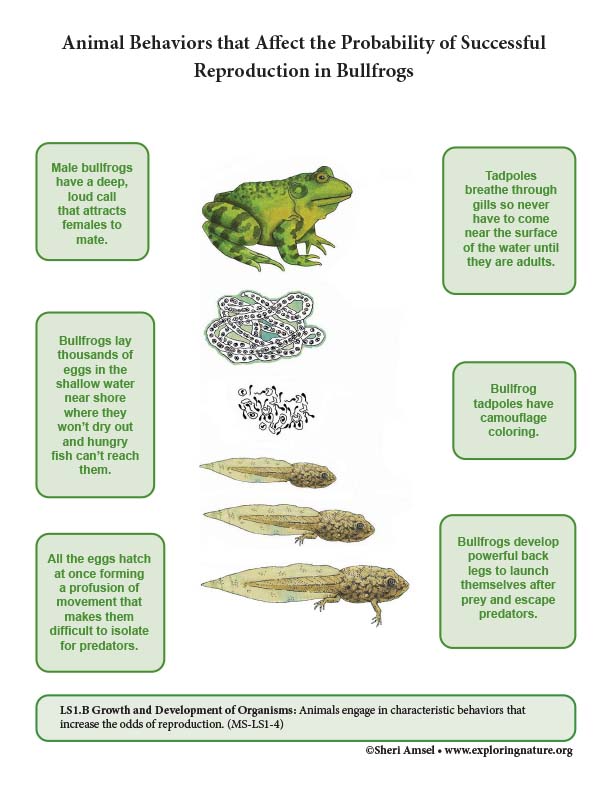

If you have ever lived near a pond, you may have heard the deep, loud call of the American bullfrog as it calls to a mate. Bullfrogs mate in the spring and the females lays thousands of eggs in the shallow water near shore. This keeps them from drying out, but also protects them from hungry fish found deeper in the pond. The eggs hatch all at once, forming a profusion of movement that makes them difficult to isolate for predators. Still, only a few tadpoles survive to become adults. Developing bullfrog tadpoles have gills at first, so don’t need to come to the surface to breathe. They can hide among the pond vegetation and eat small insects. As they grow and go through the metamorphosis toward their adult form, their mottled coloring is good camouflage, hiding them from fish and hungry birds. By the time they reach their impressive adult size, they have developed lungs to breath air and powerful legs to launch themselves after prey - fish, worms, insects, small ducks, other frogs, and even turtles.
Can you think of how each of these characteristic behaviors in bullfrogs help increase the odds of reproduction?
Try this Authentic Performance activity to test your knowledge and scientific reasoning.
When you research information you must cite the reference. Citing for websites is different from citing from books, magazines and periodicals. The style of citing shown here is from the MLA Style Citations (Modern Language Association).
When citing a WEBSITE the general format is as follows.
Author Last Name, First Name(s). "Title: Subtitle of Part of Web Page, if appropriate." Title: Subtitle: Section of Page if appropriate. Sponsoring/Publishing Agency, If Given. Additional significant descriptive information. Date of Electronic Publication or other Date, such as Last Updated. Day Month Year of access < URL >.
Amsel, Sheri. "Animal Behaviors that Affect the Probability of Successful Reproduction in Bullfrogs (NGSS 6-8 Grade)" Exploring Nature Educational Resource ©2005-2024. December 13, 2024
< http://www.exploringnature.org/db/view/Animal-Behaviors-that-Affect-the-Probability-of-Successful-Reproduction-in-Bullfrogs-NGSS-6-8-Grade >
